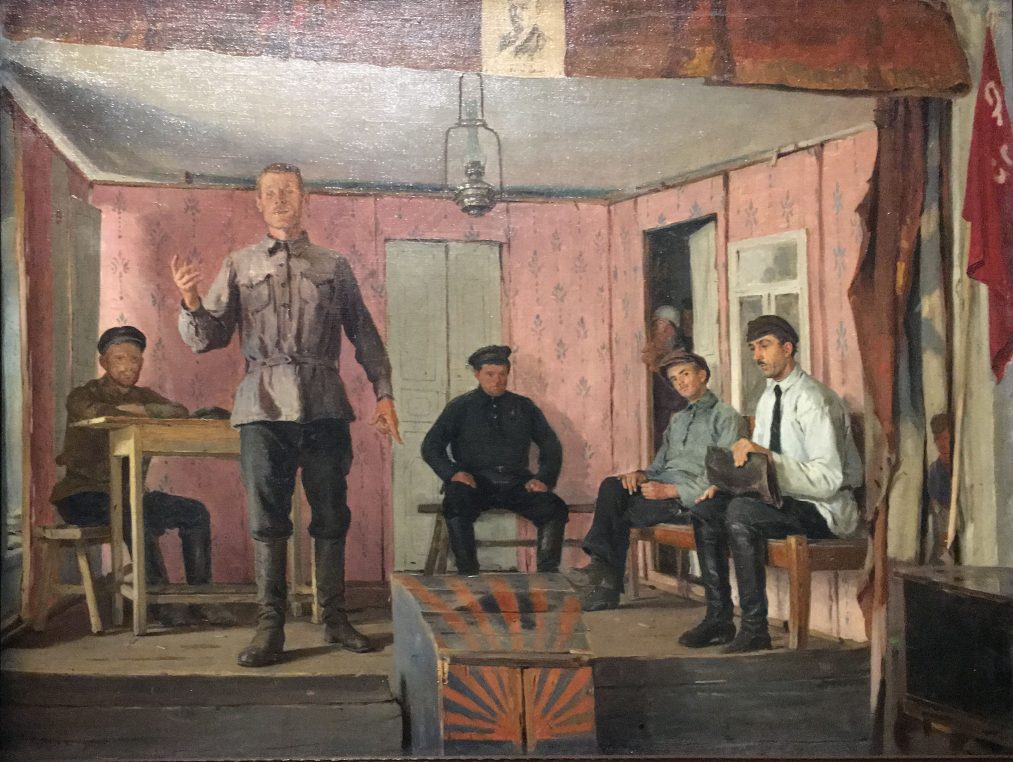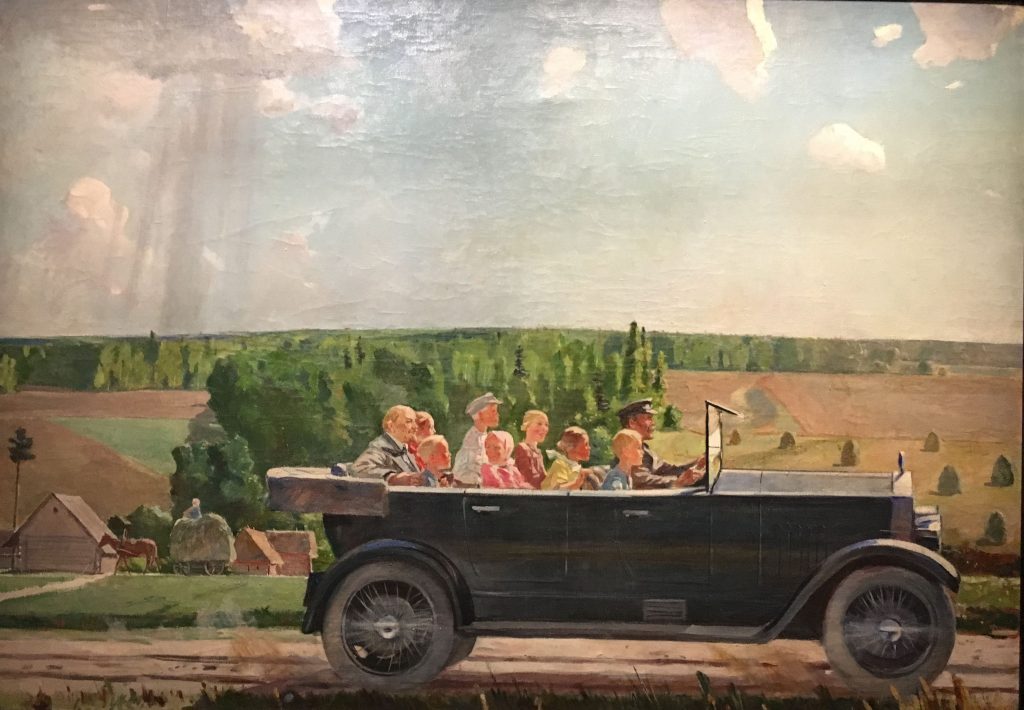This is not an uplifting exhibition, but “Red, Art and utopia in the land of Soviets” has enough striking paintings, designs and films that you might want to visit it any way. There are two parts in the exhibition as Nicolas Liucci-Goutnikov, the curator, was telling us, ten years from 1917 of intense activity by Russian artists and at the end of the 1920’s, Stalinist supremacy. Centre Pompidou and major Russian museums lent enough works to give us an idea of the art scene in the USSR and Rodchenko and Malevitch justify the visit.
In the beginning, the artistic discussion was about abandoning “bourgeois art” in favor of “art of production” which could transform the Russian way of life through design, architecture and cinema, a key medium which is well represented in the show. Constructivist architecture created new categories of architecture like collective habitat, worker’s clubs and ideal cities. Moscow was entirely transformed in 1935 with a plan for the reconstruction of the city (inspired by Haussmann), with lavishly decorated metro stations and new high-rise buildings. For the 10 th anniversary of the Revolution in 1927, International artists like Diego Rivera and John Heartfield are invited to visit and work. Revolutionary art reigns under Stalin.
What is interesting is that art was, from the beginning of the Revolution, part of the political will to attract the people. Founded in 1922, the AKhRR, Association of Artist of Revolutionary Russia, is created to capture the historical moment. When the Weimar Republic recognizes the USSR, an exhibition of Russian art takes place in Berlin and German communist artists Otto Angel, George Grosz and Eric Johnson suggest a German artists’ show in Moscow in 1924 and Leningrad in 1925. Lenin’s death in 1924 will be a turning point and an artistic cult is born.
Theater becomes a powerful stage for art and design, and a new style of social living encourages the construction of collective units. Printing and photography promoted by Rodtchenko and Maïakovski, are taught everywhere and socialist realism develops. In parallel, the cult of the body becomes major and athletes work on their body-machines with an emphasis on military in the 1930’s. There are a few very kitsch paintings of men swimming in Dombass by modernist figurative artist Alecsandr Deyneka and of Lenin going on a drive with children, and young women running in shorts in 1944.
On December 21, 1949, Stalin celebrated his 70 th birthday. Everyone sent presents from the USSR and communist artists from Western European countries, offered works which were exhibited in the Pushkin museum until after the dictator’s death in 1953 (the same day as Prokoviev’s on March 5). A fun work by Boris Taslitzky describes an escalator in the Paris metro, 1935. A few caricatures of American capitalism by Fred Ellis and Jacob Burck are hilarious.

Anatoli Yar-Kravtchenko, A.M. Gorki reads to his comrades Staline, Molotov and Vorochilov, his tale of the “Young woman and death” in 1931, 1941, Moscow, National Gallery Tretiakov
The exhibition is on till July 1 at Galeries Nationales du Grand Palais.
Share this Post




